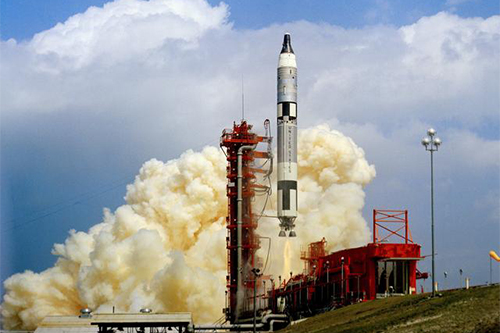The Link to the Moon
Back when space felt out of our grasp, the Titan II rocket was the main vehicle for the Gemini capsule. The Gemini Program was an early NASA program focused on human flight and helped scientists learn about the main components of space travel. The Titan II increased accuracy, launch time, and reliability at liftoff, making it possible for NASA to define and test the skills needed to go to the Moon.
History of The Titan II
October 1959
U.S. Air Force approves the Titan II program
Before its use during Gemini, the Titan program originated as a backup option to Atlas, the first operational intercontinental ballistic missile (ICBM) in the United States. ICBMs were first deployed by the United States in the 1950s and continue to be considered a strategic defensive weapon.
In 1958, the Martin Company proposed the development of the Titan II, and in 1959, the United States Air Force approved the program.
January 1960
First Successful Test of Titan I
In January 1960, NASA had its first successful test of a Titan I, which launched almost two decades of space exploration and multiple missions.
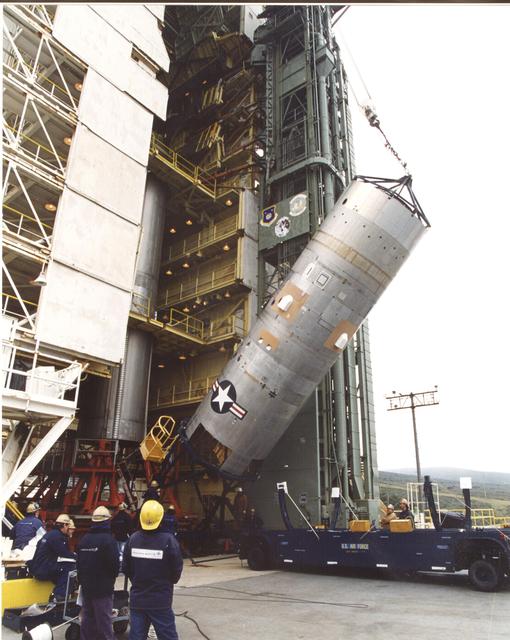
April 8, 1964 – March 23, 1965
Titan II First Test Flights
On April 8, 1964, the Gemini program had its first launch with an uncrewed test flight.
On March 23, 1965, astronauts Gus Grissom and John Young launched on Gemini 3 as the first crewed test flight of the Gemini program.
For the Gemini program, NASA used the Titan II as a space launch vehicle (SLV). The astronauts would sit in the re-entry capsule located at the top of the spacecraft. Inspired by the two-person capsule used in the program, the name Gemini comes from the Latin translation meaning “twins.”
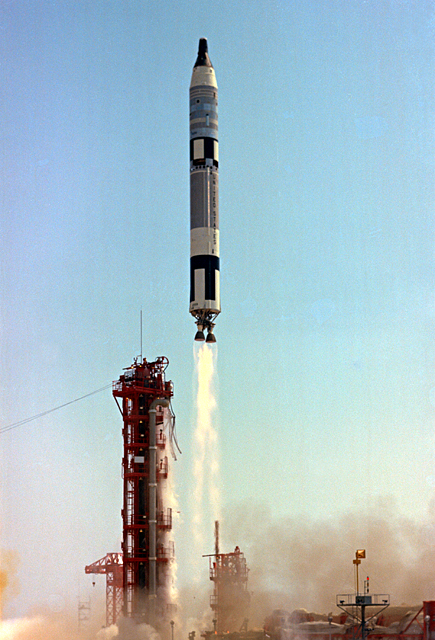
June 3, 1965
First American to Spacewalk on Gemini 4
Astronauts James McDivitt and Ed White launched on Gemini 4 on June 3, 1965. On the mission, Ed White became the first American to spacewalk. The whole extravehicular activity (EVA) lasted 23 minutes.
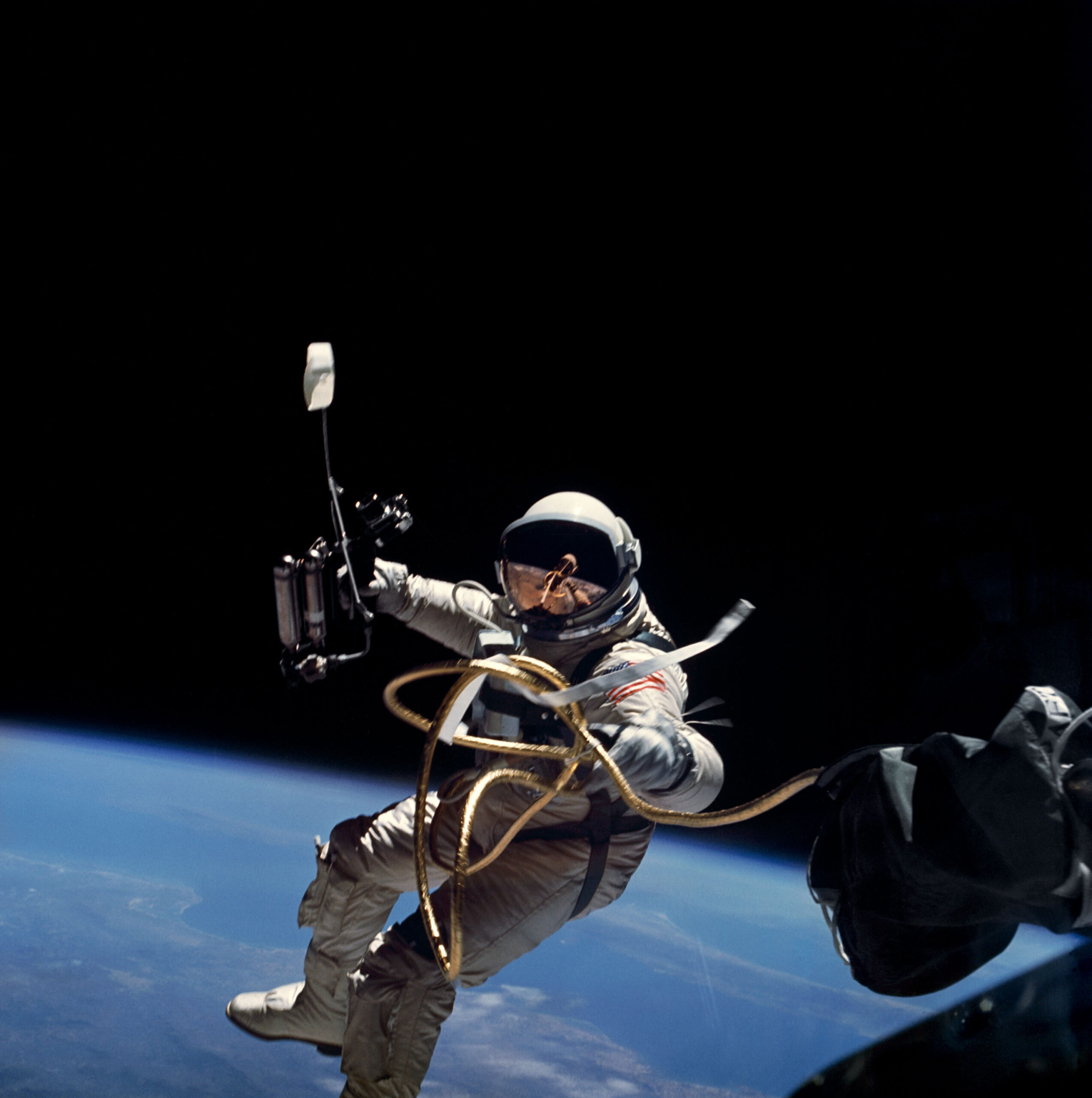
December 15, 1965 – November 11, 1966
Gemini 6A – 12 Missions
Over the next year, NASA had multiple launches as a part of the Gemini program, including:
- December 4, 1965: Astronauts Frank Borman and Jim Lovell launch on Gemini 7.
- December 15, 1965: Astronauts Walter Schirra and Tom Stafford launch on Gemini 6A and successfully rendezvous two crewed spacecraft with Gemini 7.
- June 3, 1966: Astronauts Tom Stafford and Gene Cernan launched on Gemini 9A and successfully maneuvered a rendezvous from above. The maneuver simulated a rendezvous between an Apollo Command Module and a Lunar Module after aborting from the moon.
- July 18, 1966: Astronauts John Young and Michael Collins launch on Gemini 10.
- September 12, 1966: Astronauts Pete Conrad and Richard Gordon launched on Gemini 11. This launch was the first-time only computer commands guided the vehicles’ thrusters during re-entry into the Earth’s atmosphere.
- November 11, 1966: Jim Lovell and Buzz Aldrin Launch on Gemini 12.
Just as the International Space Station is helping NASA learn how to survive on Mars, Gemini defined and tested the skills needed to go to the Moon.
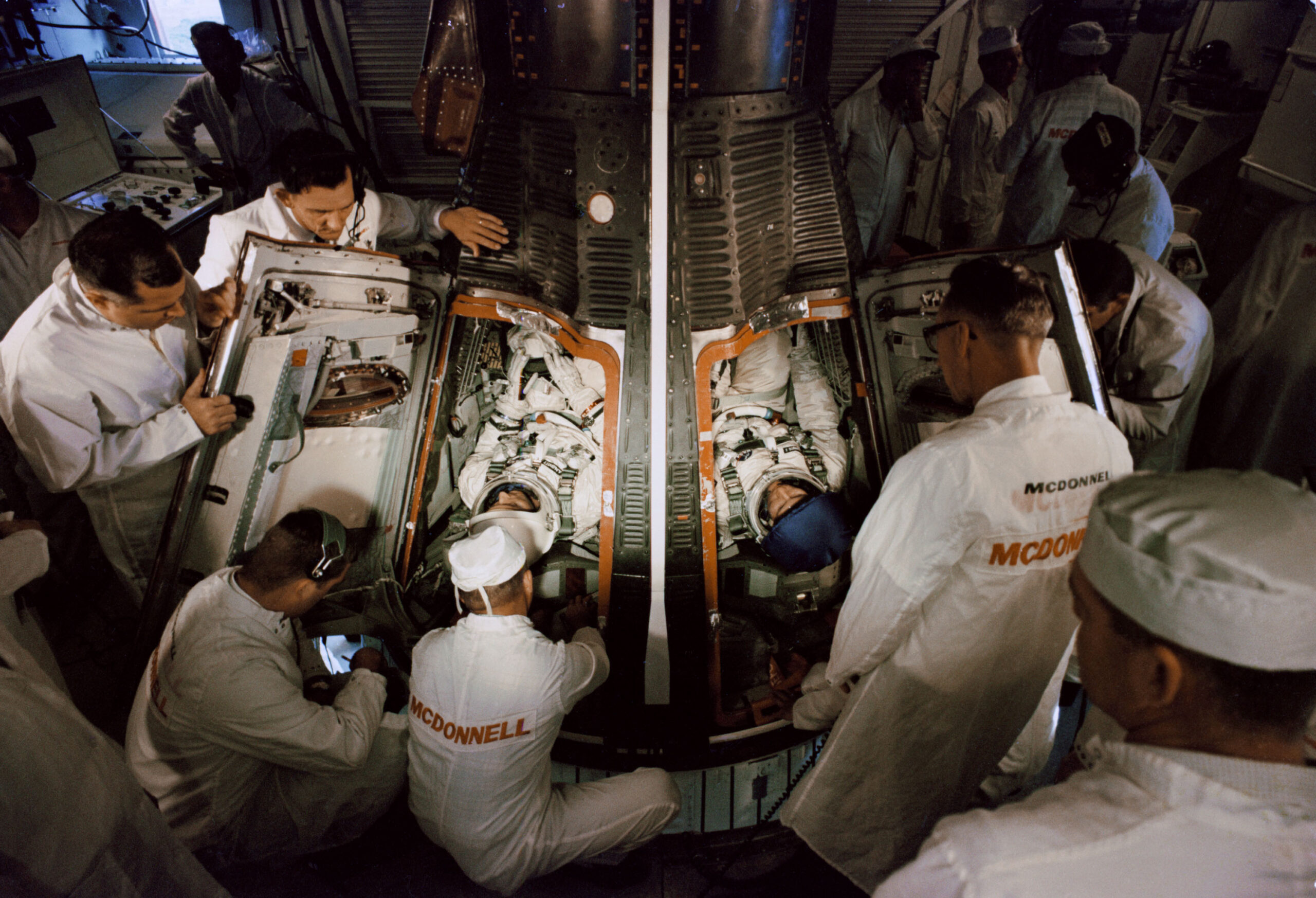
October 1987
The End of the Titan II Program
In October 1981, President Reagan announced a plan to modernize land-based ICBM programs, marking the end of the Titan IIs. The Titan II program was identified for deactivation, and it officially came to an end in October 1987.
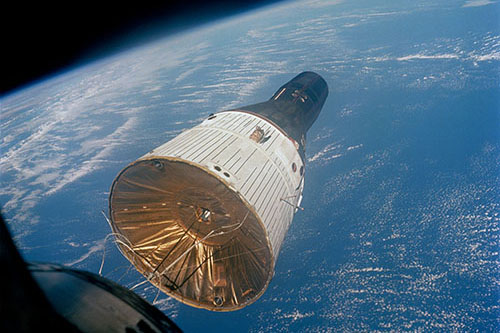
Frequently Asked Questions
This Titan II with its original launch room is real. It is the only remaining example of a Titan II SLV and one of only a handful of Titan IIs on display worldwide.
The Titan program originated as a backup option to Atlas, the first operational intercontinental ballistic missile (ICBM) in the United States. ICBMs were first deployed by the United States in the 1950’s and continue to be considered a strategic defensive weapon.
The Titan II was active during the Gemini program between 1965 and 1966. The Gemini missions included the first American spacewalk, the first in-space rendezvous between Gemini 6A and 7, studies on the effect of extended time in space, and other maneuvering milestones. The questions answered during Gemini were essential to the success of the Apollo moon landings.
Yes. The Titan II was a critical part of military defense systems and NASA’s Gemini project.
Have a Titan II story you would like to share?
The Stats
103′
Length
10′
Width (Diameter)
330,000
Pounds, Weight at Liftoff
16,000
MPH, Velocity
Physical Description
This aircraft is an upright, cylindrical, two-stage liquid-fueled space launch vehicle, or SLV. It was converted from an intercontinental ballistic missile (ICBM), and the re-entry capsule of the SLV seats two people. The launch platform is silo-based, and all ICBM launch facilities were built underground. The base of our SLV features two conical thrust chambers with wide openings facing down, while the top end features one cone. The body of Titan II is silver-gray and features the U.S. Air Force logo just below the top cone and U.S. Air Force written vertically down one side in navy blue.
